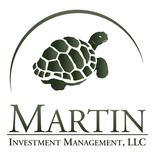At Martin Investment Management, LLC, we see a positive correlation between capex growth and labor productivity growth during the second quarter of 2015.
We continue to look for opportunities in companies that advocate productivity increases.
In our opinion, some of the most attractive equity opportunities are tied to several compelling trends that are likely to persist over the coming years in technology, health care, and the consumer sectors.

Short-Term Rules
Over the long-term, strong, well-managed companies with exposure to these areas are likely to exhibit better than market growth, and their equities have greater prospects for capital appreciation, according to our analysis.
Because of economic uncertainty, short-term investment behavior has increased since 2009.
The behaviors of company management, shareholders, and investors appear to be following the same short-term horizon.
In my opinion, corporations have bypassed additional R&D expenditures, fixed capital spending, and human capital investment in education for skilled employees in favor of short-term goals of share buybacks, profit margins, and CEO stock option remuneration.
Growth Drag
Corporate management bypasses more costly R&D and capital expenditures that do not boost their remuneration.
Short-term behavior has significant investment implications acting as a drag on domestic demand growth according to Jeremy Grantham of Grantham Mayo van Otterloo (GMO).
Other economists have noted that the growing inequality in society may be the a result of inadequate long-term planning to enhance human capital formation.
On a portfolio level, a longer-term view does not eliminate risk out of the investment equation or address technological destruction.
Patience
However, an entirely short term focus creates a herding mentality, where everyone buys or sells the same assets simultaneously driving prices from equilibrium.
According to David Donoho in the article, “Is Patience a Virtue? The Unsentimental Case for the Long View in Evaluating Returns,” The Journal of Portfolio Management, 2010, a manager’s track record takes about 25 years to assume statistical significance.
Productivity growth has remained very low over the past several years, yet there is a positive correlation between capex growth and labor productivity growth two years later. Capex has been a laggard in the current recovery.
The current recovery has been led mostly by the continuation of the shale boom, which has had narrow implications for growth, capital, and labor across most industries.
As a result, capex has not been a source of productivity growth in the current expansion.
Capital growth should strengthen as unit labor costs rise, creating an incentive for companies to substitute more capital for labor.
Knowledge Effect
Operational efficiency is much greater in high skilled labor industries because of the knowledge effect.
Steven Vannelli, CFA, and Eric Bush, CFA published an article this June on a new market anomaly, “The Knowledge Effect: Excess Returns of Highly Innovative Companies.”
They discuss how conservative accounting practices since 1974 have led to an information deficiency of companies investing significantly in knowledge.
This leads investors to make a systematic error reflected in a persistent risk premium or excess return for these companies.
Best Ideas
This inefficiency has led highly innovative companies to deliver persistently positive abnormal returns in the stock market.
At Martin Investment Management, we look to invest in highly innovative companies in the Best Ideas portfolio.
Photo Credit: Daniel D’Auria via Flickr Creative Commons


